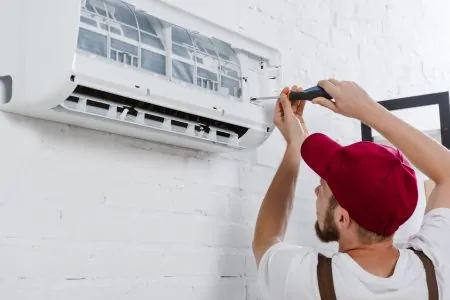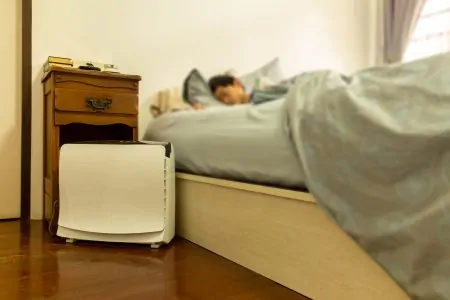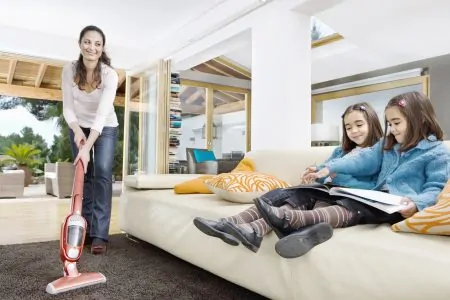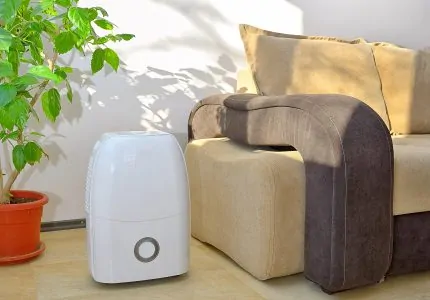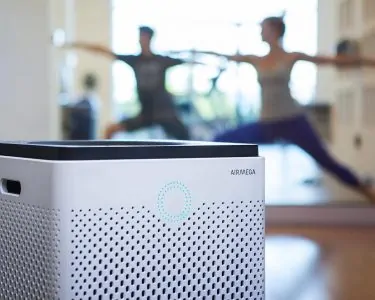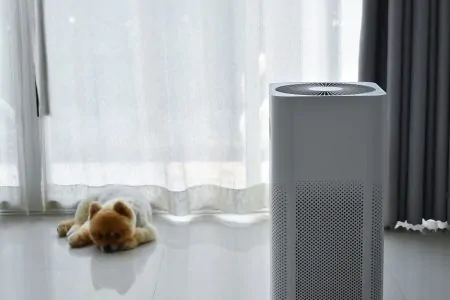We know that homes are already time-consuming to maintain, but it’s absolutely crucial that you change your air filters regularly.
Air filters are generally installed in air-conditioners, ventilation, furnace, or other heating systems. There, they work to improve the air quality inside your living space.
If you don’t change them often enough, you will have higher energy costs, poor airflow, low air quality, and you could damage your equipment. We’ll show you how often you should change your air filters and the signs that tell you when it’s time.
Key Takeaways
- Change air filters regularly for better air quality, lower energy costs, and to prevent equipment damage.
- Air filters have different types and MERV levels, with higher MERV providing better filtration.
- Frequency of filter replacement depends on filter type, allergies, presence of children and pets, and usage.
- Replace your air filter by turning off the HVAC system, removing the old filter, and installing the new one in the correct direction.
Why Should You Change Air Filters?
An HVAC system pushes air through the filter, trapping dirt, dust, pollen, mold, and other particles. When left unattended, filters accumulate dirt, and the following can occur:
- Decreased airflow efficiency.
- Damage to your cooling or heating equipment.
- Lower air quality leading to cardiovascular and respiratory health complications and diseases (1).
- A higher energy bill. Dirty filters make your HVAC system work harder, increasing your energy bill. For instance, unclogging your A/C can lower your electricity bill by 5 to 15 percent (2).
How Often to Change Air Filter?
If you live alone, don’t suffer from allergies, or have young children and pets, aim to switch your screen every six months. Durability, however, depends on the type of filter you have. The better the quality, the more efficient it is at retaining dirt and the longer it lasts.
Filter Types
Filter quality is based on the material used and MERV level — Minimum Efficiency Reporting Value (3).
The higher the MERV value is, the least amount of particles the filter lets through. For the best filtration, a screen with MERV 8 or higher is recommended (4).
1. Washable Filters
These filters are built with a thread-like mesh. Although they’re reusable, they provide the least amount of filtration — MERV 1 to 3. They’ll stop pollen, hair, dust, and fur, but will let viruses, dust mites, smoke, and spores go through.
Change these filters monthly or every three months minimum.
2. Fiberglass Filters
Fiberglass filters are inexpensive and generally feature MERV levels from 2 to 4. Unlike washable screens, however, they can trap dust mites. Nonetheless, you should change this type of screen every 30 days to three months.
3. Pleated Filters
These are pricier options than the previous two. They can also capture more dirt than the two previous other types — MERV 6 to 10. Although you can replace some high-quality pleated filters only every six months, you should swap a regular one every 90 days.
4. Electronic Filters
These screens are electro-magnetically charged to increase efficiency — MERV 8 to 16. Compared to other models, they can also stop viruses and smoke. Available at a higher price point, they require the use of specific HVAC systems.
These filters only need to be replaced once a year. This makes them a popular option for anyone with limited time to dedicate to filter maintenance.
5. HEPA Filters
Finally, HEPA filters are the high-end spectrum of air filters — MERV 17 to 20, filtering up to 99.9 percent of all particles (5). They can be costly but only need to be replaced every six months to a year. Some pleated models can even last up to two years (6).
Filter Thickness
Screens also come in various thicknesses, typically from one to five inches. The thicker the material, the more dirt it can hold, and the more durable it is.
| Thickness | Durability |
| 1 inch | Up to three months |
| 2 inches | Up to four months |
| 4 inches | Six to eight months |
| 5 inches | Up to a year |
Special Conditions
In the following circumstances, you might want to replace the screen more regularly:
- Allergy and asthma: If anyone in the family suffers from these conditions, it’s best to change it every 4-6 weeks.
- Pets: Dogs and cats emit strong smells and shed hair between seasons. If you own one pet, replacing your filter every two months should be enough. But when several pets live inside a home, changing the air filter monthly is recommended.
- Children: Babies and toddlers are sensitive to air quality. So switch out your air filter at least every two to three months to ensure they breathe clean air.
- Heavy use: If you constantly use an A/C or a heating system, interchange them every few weeks as needed. On the other hand, checking it every six months should suffice if it’s your secondary home.
- Home size: The larger your home, the more air goes through, which may require frequent maintenance.
- Outdoor air quality: It’s also important to consider the air quality outside your home. If you live in a highly polluted area or near a highway, we recommend checking the filter condition more often.
Indications Your Filter Needs Replacing
Not sure which of the categories above best describe your air filter? A quick visual check can hint at whether or not you should change the screen.
If there is only a thin layer of dust, you can wait a few more weeks before changing it. But if you can’t see through it when holding the filter up to a light source, it’s time for a replacement.
In addition, if your electricity bill is higher than usual or you’re starting to feel the first signs of allergies, that’s a sign to change.
How to Change an Air Filter
Changing an air filter is a straightforward process.
User’s Manual
Starting by consulting the user’s manual is often a good idea. It indicates what type of filter is required and the size suitable for your HVAC system.
Remember that replacing the filter with one not recommended by the manufacturer will likely void your warranty.
Type of Filter
Your second step will be to select the type of filter you need — washable, fiberglass, pleated, electronic, or HEPA. Then, check the dimensions of your current screen to ensure the new one will fit.
Switch Filters
Before starting any work, turn off the HVAC system. Every ventilation, cooling, or heating equipment may come with a different opening system. But typically, you can access the filter by pulling a cover or unscrewing it; either way, it isn’t complicated.
Remove the old screen and place your new filter. On the side of the frame, you’ll notice arrows pointing in one direction — where the air is flowing. Ensure that the new screen is installed with the proper orientation.
If you opted for a washable filter, spray the side opposite to the airflow. Keep the water pressure low to prevent the fiber material from breaking or separating.
FAQs
Take a Deep Breath
Replacing your HVAC filter regularly is key to maintaining good quality air inside your home. Typically, the more particles your screen can stop, the longer it’ll last. You can measure a filter’s efficiency in MARV levels, generally ranging from one to 20.
You should change most models at least every six months. Yet, the filter’s quality, allergies, or the presence of children and pets may require more frequent maintenance.
After selecting the size and type of filter you need, remove the old filter and place the new one in the right direction. It might be a good idea to write down your last maintenance date to schedule when the next one should be.
